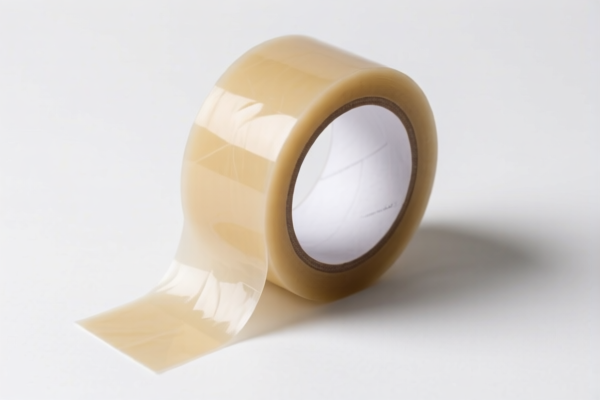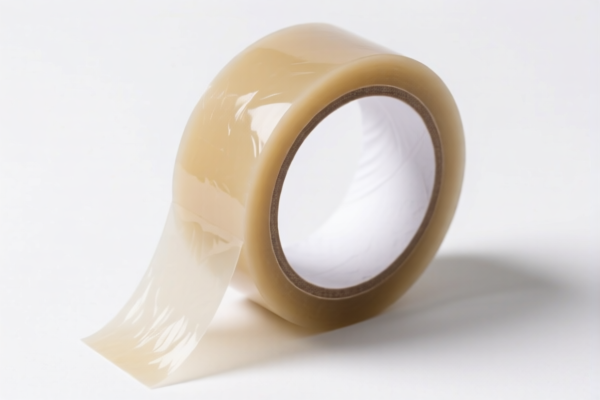| HS Code | Official Doc | Tariff Rate | Origin | Destination | Effective Date |
|---|---|---|---|---|---|
| 8523590000 | Doc | 55.0% | CN | US | 2025-05-12 |
| 8548000000 | Doc | 55.0% | CN | US | 2025-05-12 |
| 3919102055 | Doc | 60.8% | CN | US | 2025-05-12 |
| 3919905060 | Doc | 60.8% | CN | US | 2025-05-12 |
| 3921904010 | Doc | 34.2% | CN | US | 2025-05-12 |
| 3921904090 | Doc | 34.2% | CN | US | 2025-05-12 |




LCD Screen Tape
LCD screen tape, also known as polarizer film tape or optical bonding tape, is a specialized adhesive used in the manufacturing, repair, and assembly of liquid crystal displays (LCDs) and OLED screens. It is critical for maintaining the optical clarity and functionality of these displays.
Material Composition
These tapes are not typical adhesives. They generally consist of several layers:
- Adhesive Layer: Typically acrylic-based, silicone-based, or epoxy-based pressure-sensitive adhesives (PSAs). The specific adhesive is chosen for its optical properties (low haze, high transparency), temperature resistance, and compatibility with the LCD/OLED materials. Some are double-sided, while others are single-sided for specific applications.
- Release Liner: A silicone-coated liner (often PET film) that protects the adhesive layer until application.
- Optional Layers: Some tapes include additional layers for:
- Conductive Particles: For electrically connecting components.
- Light Diffusion: To improve viewing angles or reduce glare.
- UV Blocking: To protect the LCD from ultraviolet radiation.
Purpose and Function
The primary functions of LCD screen tape are:
- Polarizer Bonding: Securing the polarizer film to the glass substrate of the LCD panel. Polarizer films are essential for creating the image on the display.
- Optical Bonding: Filling the gap between the LCD panel and the touchscreen digitizer or protective glass, reducing light refraction and improving image quality, contrast, and touch sensitivity.
- Dust and Moisture Protection: Sealing the display components to prevent the ingress of dust, moisture, and other contaminants.
- Component Assembly: Holding various components of the LCD module together.
- Touchscreen Attachment: Bonding the touchscreen layer to the display.
Usage Scenarios
- LCD/OLED Manufacturing: Used extensively in the automated assembly lines for creating new displays.
- Display Repair: Commonly used by technicians to replace broken screens, repair digitizers, and re-bond components. This includes smartphones, tablets, laptops, monitors, and automotive displays.
- Custom Display Assembly: Used in specialized applications where custom displays are built or modified.
- Automotive Industry: Bonding displays in dashboards, infotainment systems, and instrument clusters.
- Medical Devices: Used in displays for medical equipment requiring high clarity and reliability.
Common Types
- Optical Bonding Tape: Designed for gap filling and maximizing optical clarity. Often used with UV-curable adhesives.
- Polarizer Bonding Tape: Specifically formulated for adhering polarizer films to glass.
- Double-Sided Tape: Provides adhesion to two surfaces, often used for touchscreen attachment.
- Conductive Tape: Contains conductive particles to electrically connect components.
- Removable Tape: Designed for temporary adhesion or prototyping, allowing for easy removal without leaving residue.
- UV-Curable Tape: Requires exposure to ultraviolet light to fully cure and achieve maximum bond strength.
- OCA (Optically Clear Adhesive): A type of liquid adhesive film, often used as an alternative to tape for optical bonding. While not a tape, it serves a similar purpose.
LCD screen tape can be classified under several HS codes depending on its specific composition and application. Here's a breakdown based on the provided information:
-
8523590000: This code covers discs, tapes, solid-state non-volatile storage devices, "smart cards" and other media for the recording of sound or of other phenomena, whether or not recorded, including matrices and masters for the production of discs. While not a direct fit, if the tape is used for recording data related to the LCD screen's function (e.g., calibration data), this could be considered. Tax Details: Base tariff: 0.0%, Additional tariff: 25.0%, Post 2025.4.2 additional tariff: 30%, Total tariff: 55.0%.
-
3919102055: This code covers self-adhesive plates, sheets, film, foil, tape, strip and other flat shapes, of plastics, whether or not in rolls, specifically those in rolls of a width not exceeding 20 cm. If the LCD screen tape is plastic-based and self-adhesive, and its width is 20cm or less, this is a strong possibility. Tax Details: Base tariff: 5.8%, Additional tariff: 25.0%, Post 2025.4.2 additional tariff: 30%, Total tariff: 60.8%.
-
3919905060: This code covers self-adhesive plates, sheets, film, foil, tape, strip and other flat shapes, of plastics, whether or not in rolls, but categorized as 'Other'. If the LCD screen tape is plastic-based and self-adhesive, but doesn't fit the width criteria of 3919102055, this code applies. Tax Details: Base tariff: 5.8%, Additional tariff: 25.0%, Post 2025.4.2 additional tariff: 30%, Total tariff: 60.8%.
-
3921904010: This code covers other plates, sheets, film, foil and strip, of plastics, specifically flexible reinforced with paper. If the LCD screen tape is plastic-based, flexible, and reinforced with paper, this code is applicable. Tax Details: Base tariff: 4.2%, Additional tariff: 0.0%, Post 2025.4.2 additional tariff: 30%, Total tariff: 34.2%.
-
3921904090: This code covers other plates, sheets, film, foil and strip, of plastics, specifically flexible and 'Other'. If the LCD screen tape is plastic-based and flexible, but doesn't fit the paper reinforcement criteria of 3921904010, this code applies. Tax Details: Base tariff: 4.2%, Additional tariff: 0.0%, Post 2025.4.2 additional tariff: 30%, Total tariff: 34.2%.
Important Note: The correct HS code depends on the material (plastic, paper reinforcement, etc.) and form (self-adhesive, width, etc.) of the LCD screen tape. Please verify the composition and characteristics of the tape carefully to ensure accurate classification.
Customer Reviews
No reviews yet.